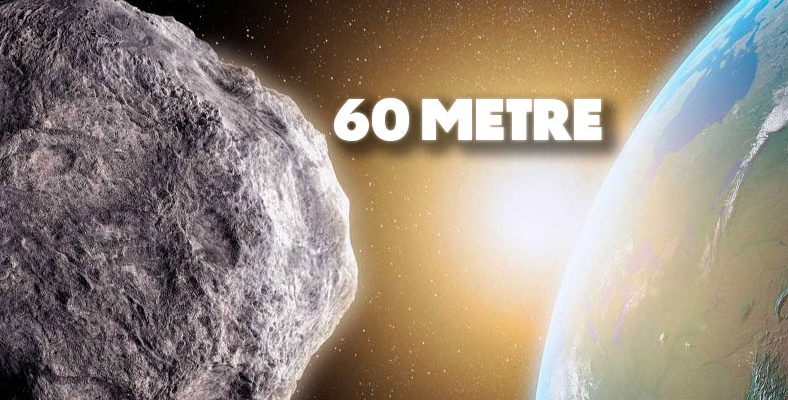2023 NT1, which passed between the Earth and the Moon on July 13, managed to hide this transit from humanity. It was discovered 2 days later that the asteroid passed close to Earth.
Although the sky looks calm when viewed from Earth, there are thousands of asteroids straying and surrendering to gravitational forces. Scientists have found these stones trying to keep many of them under observation.
But on the 13th of July, something very interesting happened. named 2023 NT1 A meteorite with a diameter of 60 meters, passed the Earth at a closer distance than our satellite Moon. The scary part is that this asteroid passed close to Earth. but it was detected on 15 July.
The sun prevented us from observing the meteorite!
- Gray line: Moon’s orbit, Green line: 2023 NT1’s path.
According to NASA data, the meteorite passed near the Earth at a speed of about 86 thousand kilometers per hour. But this transition is not the same as telescopes tracking meteorites. As soon as they look directly at the sun took place.
The light from the Sun greatly reduced the view of the telescopes. Therefore, at the moments when the meteorite passes, The whole world was unaware of this. The event was discovered thanks to the telescope, which is part of the Asteroid Terrestrial Impact Final Warning System in South Africa.
The telescope, which is responsible for detecting meteorites that are at risk of hitting the Earth days and weeks ago, can only detect 2023 NT1. As you move away from the world caught. Dozens more telescopes soon observed 2023 NT1.
Estimated 10-year route of 2023 NT1, It turns out that there is no risk of crashing into the Earth. In other words, even if we had detected the meteorite beforehand, the situation would not have been much different.
So, isn’t something being done against the situation that prevents us from observing meteorites?
This isn’t the first scenario where the Sun has prevented us from observing meteorites. For this reason, the scientific world continues to work to keep these independent structures under constant surveillance. European Space Agencyplans to launch a telescope that will be placed between the Sun and Earth in 2030.
RELATED NEWS
Here’s What Earth and Moon Look Like From Mars (In Memory of Pale Blue Dot)
Source :
https://www.livescience.com/space/asteroids/a-skyscraper-size-asteroid-flew-closer-to-earth-than-the-moon-and-scientists-didnt-notice-until-2-days-later
